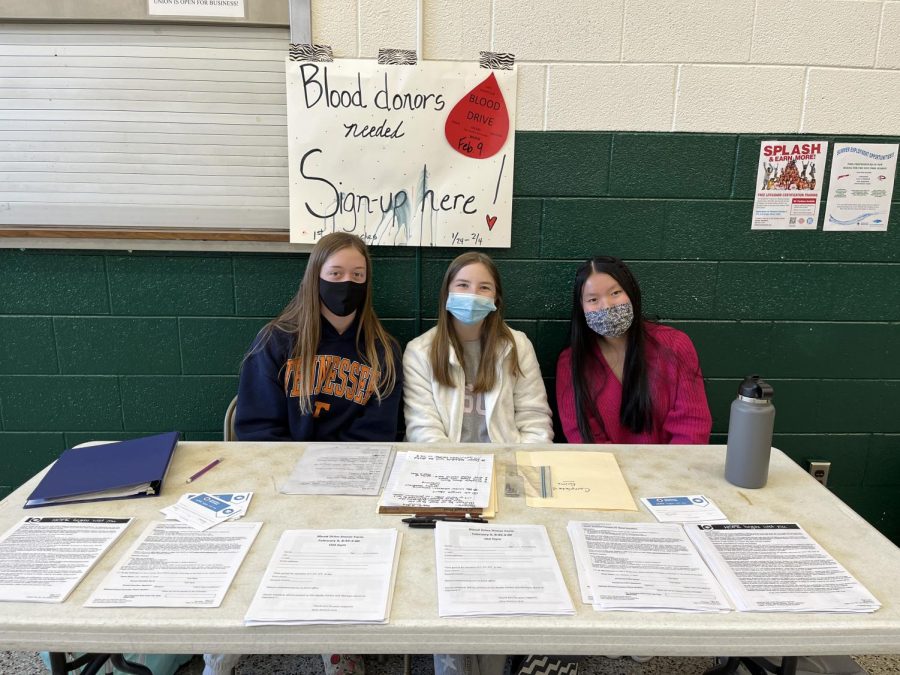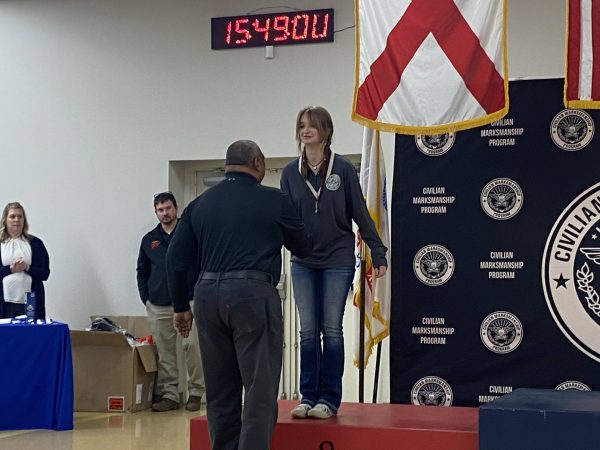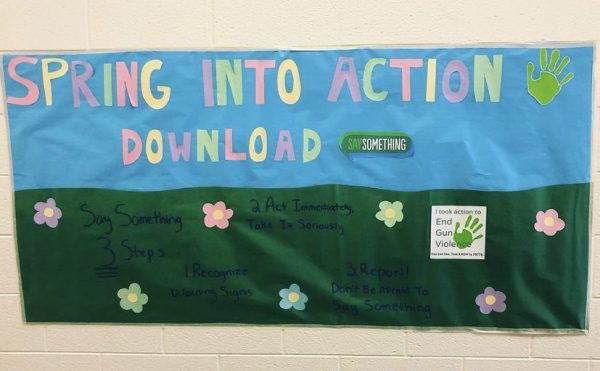Make A-Positive Impact: GSC hosts annual blood drive
Girls Service Club members take sign ups at a table outside the cafeteria. All students 16+ are encouraged to donate.
February 5, 2022
After having to cancel last year due to COVID, the Girls Service Club is back in action with their annual blood drive. This year is especially important because the U.S. is in the midst of a national blood shortage. The shortage has caused medical providers to choose which patients receive a transfusion. While this has already caused some tough decisions to be made, the demand for blood has risen 10 percent in hospitals and increased nearly five times in other healthcare facilities.
“People are suffering as a result of the scarcity, and everyone who can help, even if it seems like a small gesture, is saving lives,” GSC Co-Vice President Mia Trowbridge said.
If we don’t increase the blood supply, situations in which patients have had to reschedule or even cancel live-saving surgeries may become more frequent. Students 16 years and older are encouraged to sign up to donate.
“It’s so important for students to donate blood and give back to their community. Even if you are just contributing a little, it could change the life of another person,” GSC Co-Vice President Rena Elefantis said.
Since the 90s, the Girls Service Club has partnered with the Red Cross to plan and execute a blood drive held right on school campus. Hard work is needed from all the club’s members in order to make this happen.
“This is huge. Making all the copies, putting up posters, receiving donor forms, getting snacks together, making sure we have some kind of uniform, making the schedules. It’s a lot of little things that go together to make it successful,” club sponsor and EC Resource teacher Katherine Johnson said.
Club members make posters to put up across campus, collect snacks to give to donors after they’ve had their blood drawn, assist the Red Cross staff and hold a hand every step of the way.
“You have to be ultra prepared, especially with communicating with the Red Cross representatives,” Johnson said.
Since the beginning of the pandemic, blood donation has been in constant decline. The drop has been especially noticeable in student populations. In 2019, about 25 percent of all blood donations came from high school and college blood drives, but now that number is only about 10 percent, according to the Red Cross. Currently, it’s estimated that only 1 in 4 hospitals are receiving the critical supply of blood that they need.
“We’re not only serving our school, we’re serving our community. Especially right now, our nation is in a critical crisis. There’s not enough blood. We’re just trying to do a little part of what needs to be done nationwide,” Johnson said.
The most wanted blood types are type O negative and type O positive as well as platelets. There are also two spots in the blood drive for a Power Red donation. A Power Red donation is a way in which a person can safely donate two units of red blood cells while a machine is able to separate them out and get the plasma and platelets back into the donor’s blood stream. In order to make a Power Red donation you must be a male of at least 17 years old, 5’1 or taller and weigh at least 150 pounds.
“Blood gives life. In times such as these, it is of utmost importance to consider donating,” GSC President Maggie Davis said.
The blood drive will be held on Feb. 9 in association with the Red Cross. Students, parents, staff and other members of the community are invited to participate.
More details on donating can be found at https://www.redcrossblood.org/donate-blood/how-to-donate/eligibility-requirements.html.













